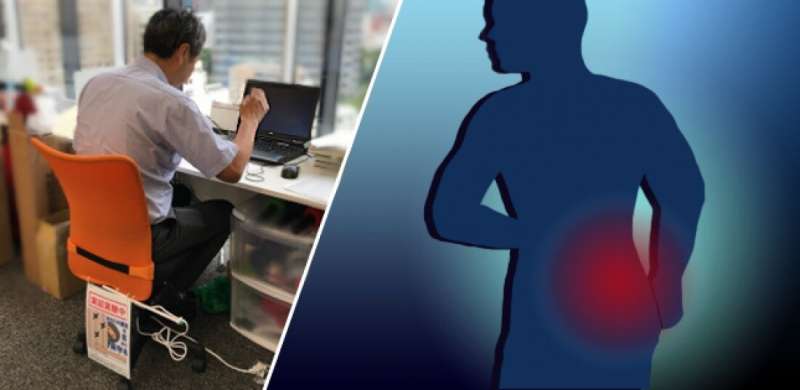The smart chair. Credit: Tohoku University
Low back pain is no strange to office workers. In Japan, 1 out of 10 otherwise healthy office workers suffer from low back pain. Stretching and exercise help alleviate the pain, but workers often do this when it is too late. But what if our chairs could alert us before the pain worsens?
Now, researchers at Tohoku University have developed a new prediction method that employs pressure sensors installed on a conventional office chair. The sensors detect workers' movements on the chair dynamically and quantitatively.
The "smart chair" was tested in a real-life setting outside of the lab. Amassing data from 22 study participants over a period of three months, the research group combed through the information to investigate the dynamics of sitting behavior and identify a predictable low back pain progression.
Further aided by various machine learning methods, the researchers discovered a common motif present in the sitting behavior of most participants. They pinpointed small motions in the body trunk that prevent the fixation of vertebral joints, therefore avoiding low back pain's progression. The frequency of this motif could be used to predict the worsening of low back pain throughout the day when compared to a morning reference state.
The research group hopes to apply the technology to other areas of the body. "Although the current method focused on low back pain, we hope to collect data relating to the head and neck regions to be able to predict and prevent stiff necks and headaches," said paper coauthor Ryoichi Nagatomi.
The study was published in the journal Frontiers in Physiology.
More information: Ziheng Wang et al, Low Back Pain Exacerbation Is Predictable Through Motif Identification in Center of Pressure Time Series Recorded During Dynamic Sitting, Frontiers in Physiology (2021). DOI: 10.3389/fphys.2021.696077
Journal information: Frontiers in Physiology
Provided by ResearchSEA
























